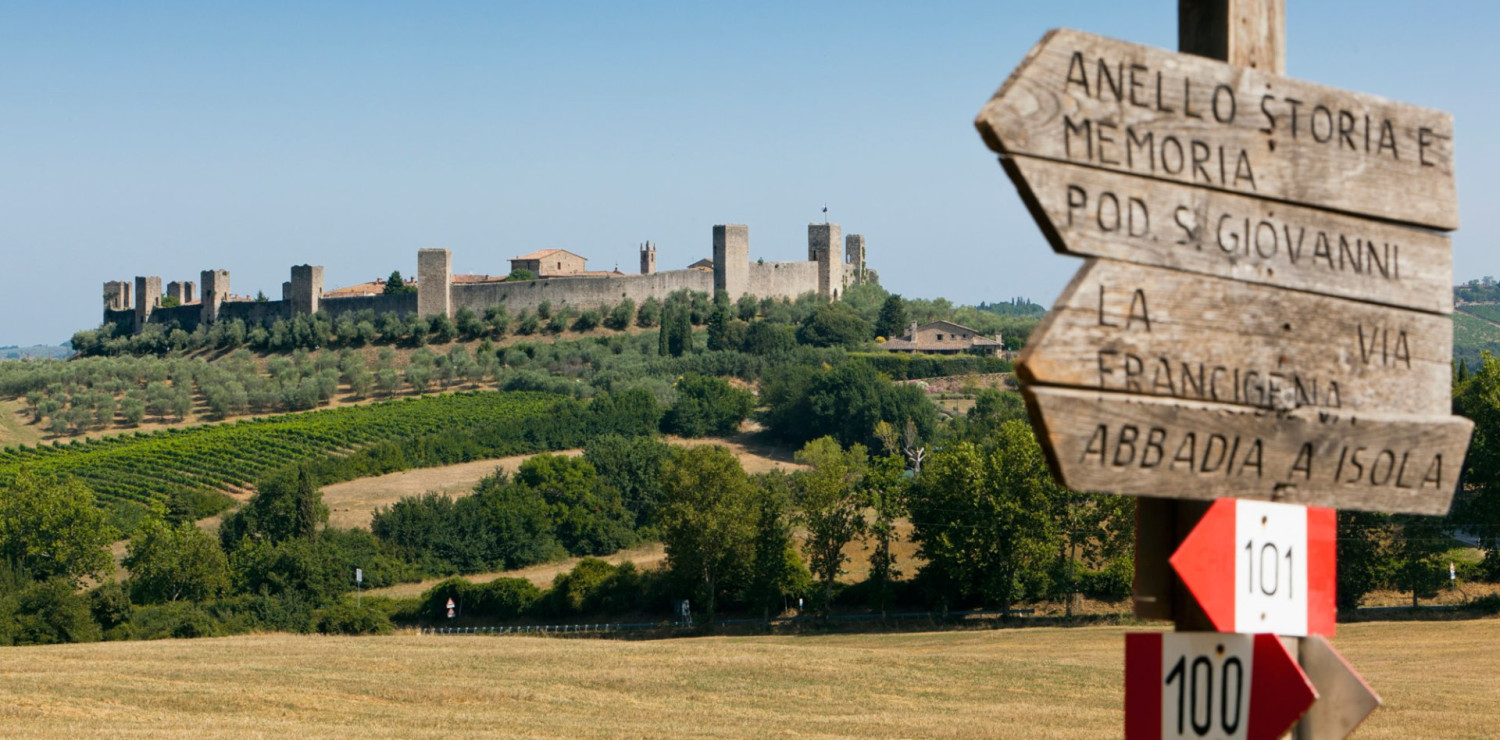The Via Francigena in Tuscany. Tips for an unforgettable experience
On the soul's route. Instructions for use and all the wonders sown in this beautiful journey
*article taken from Firenze made in Tuscany n.54, issued before the coronavirus emergency
In medieval times, several possible roads led pilgrims from Canterbury through Central Europe and France to St. Peter’s tomb in Rome. A nearly 2,000-kilometer-long route travelled for the first time by the Archbishop Sigeric in 990 A.C. He documented his itinerary step by step, noting down all the stages (no less than 79) of his return journey from the Eternal City to the Cathedral of Canterbury, a sort of tourist guide ahead of his time. Sigeric’s documented route is the Via Francigena which, in Tuscany, reaches its peak: 15 stages (from 22 to 35) and nearly 400 kilometers of untouched nature. An all-absorbing experience which is becoming increasingly appealing to slow-walking lovers.
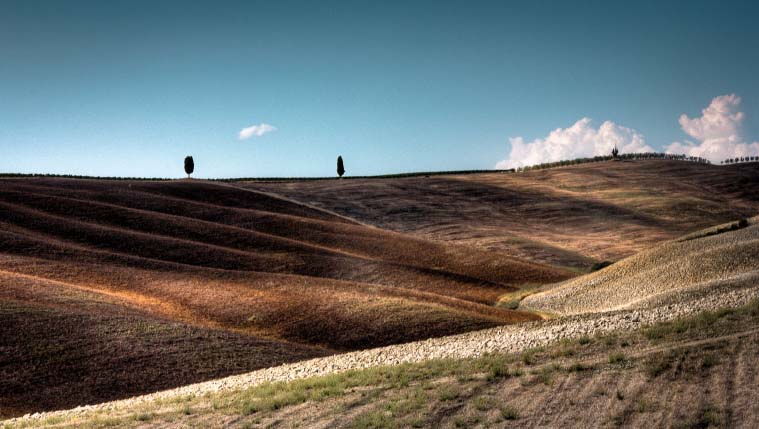 A NEARLY 2,000-KILOMETER-LONG ROUTE TRAVELLED FOR THE FIRST TIME IN 990 A.C.
A NEARLY 2,000-KILOMETER-LONG ROUTE TRAVELLED FOR THE FIRST TIME IN 990 A.C.INSTRUCTIONS
From Pontremoli to Acquapendente, through Pietrasanta, Lucca, San Gimignano and Siena, travelling the Via Francigena today means experiencing a different way of travelling, savoring the pleasure of walking surrounded by nature, by breathtaking landscapes, villages, parish churches and art cities along the way. Or rather, the ways, because the Via Francigena is not a single road, but a number of possible routes, as many as the countries
travelled. AVEF is the European Association of Francigena roads, which provides all information about the routes and accommodation facilities along the route. One can download the Via Francigena App from the viefrancigene.org website to visualize the route on an interactive map or book the package tour that best suits one’s needs. As far as Tuscany is concerned, the viafrancigenatoscana.org website provides information about the state of the route, tourist development, accommodation facilities and coordination with other pilgrimage routes.
THE JOURNEY
From Pontremoli to San Gimignano. The first Tuscan stages wind their way through the heart of the Lunigiana area, a lush green land dotted with castles, such as the Malaspina Castle. Make a short detour to bathe your feet in the Versilian sea before continuing along the route through the inland hills. Visit the artists’ studios of Pietrasanta, the Italian “Athens” at the foot of the Apuan Alps, from which the world’s most famous marble is quarried, and then reach Lucca, whose Renaissance walls enclose one of Tuscany’s most enchanting towns.
Visit Piazza dell’Anfiteatro, which used to be the site of a Roman amphitheater dating back to the 2nd century A.C., the Church of San Michele in Foro with its magnificent facade, the Guinigi Tower with its 40-meter-high terraced garden overlooking the city, and the Cathedral of San Martino with the labyrinth embedded in the right pier of the portico, a mysterious symbol representing the pursuit of the mystical and sacred. Along the road, stop at Altopascio, the place of birth of the order of the Cavalieri del Tau, Europe’s oldest knightly religious order. Further on, after the climb from the Fucecchio plain, you can dine with the Franciscan friars of San Miniato Alto and sleep in one of the convent’s cells. Walking through the thick woods of the Val d’Elsa area, before catching sight of San Gimignano’s 15 towers, all of a sudden you will see, at the end of a row of cypress trees, the spectacular Pieve di Cellole, a mystical place which houses the magnificent Monastery of Bose.
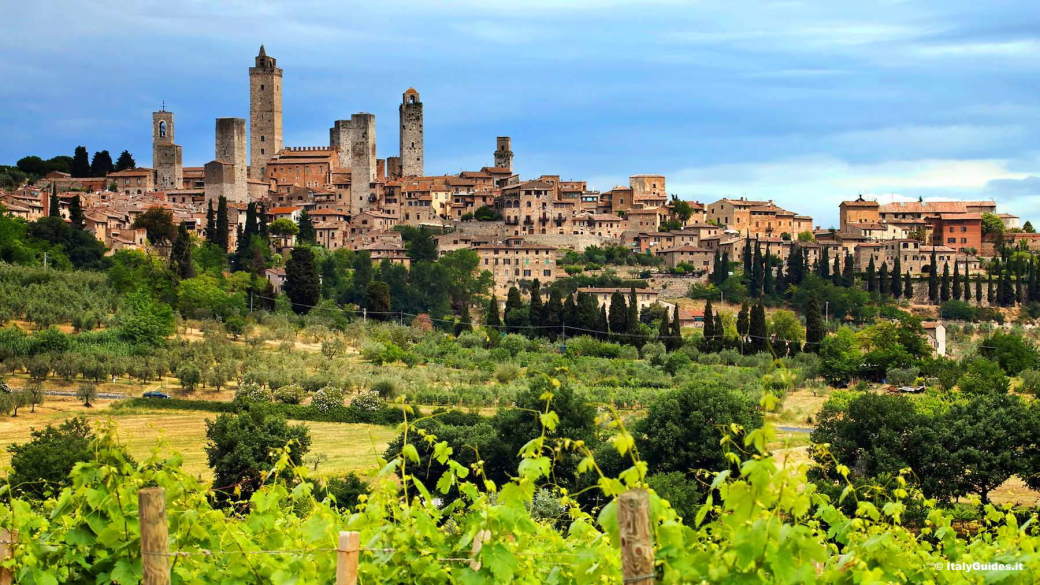 San Gimignano
San GimignanoLocated a few kilometers ahead is the Sanctuary of San Marziale, dedicated to the saint who performed the first miracle of the Via Francigena, by bringing his travelling companion Austricliniano back to life. Just past Colle Val d’Elsa- note that an elevator connects the lower and upper and oldest part of Arnolfo di Cambio’s hometown- within a distance of one kilometer from the town, you will find the parish church of Santa Maria Assunta a Chianni and the Hostel of Sigeric, where the British prelate rested along his journey.
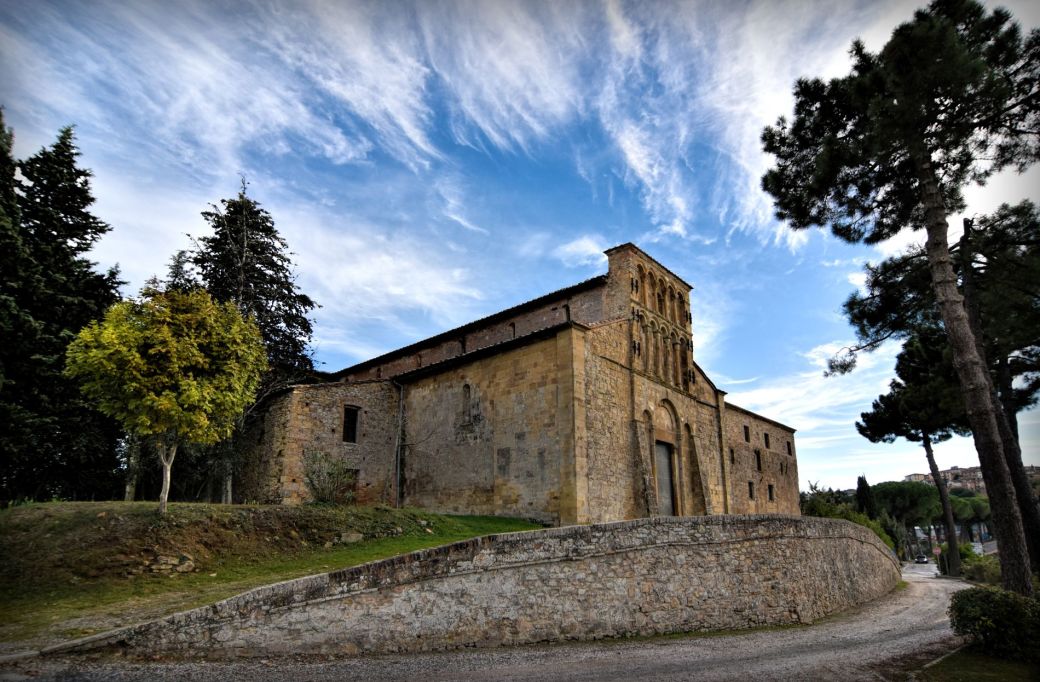 pieve di Santa Maria Assunta a Chianni
pieve di Santa Maria Assunta a ChianniFrom Siena to Aquapendente. This is one of the Via Francigena’s most beautiful stretches, winding through the province of Siena along the ancient Via Cassia road. It is the quintessential Tuscan landscape, as you’ll be travelling through a postcard-perfect scenery. From San Gimignano, the Via Francigena unrolls through the hills. You’ll cross fields of golden wheat and a thicket to reach Monteriggioni, the castle built in the thirteenth century to protect the Republic of Siena from Florence, and this is the last stop before entering Siena. In the Middle Ages, Siena was one of Europe’s wealthiest and densely-populated cities.
Pilgrims accessed the city through the gate of Porta Camollia and reached the Hospital of Santa Maria della Scala, located next to the Duomo, the largest Duomo of medieval Europe. We highly recommend to spare some time for Siena and visit the magnificent Duomo,
Piazza del Campo where the Palio race is held, and the museum housed in the former Hospital of Santa Maria della Scala, which once accommodated all pilgrims travelling the Via Francigena.
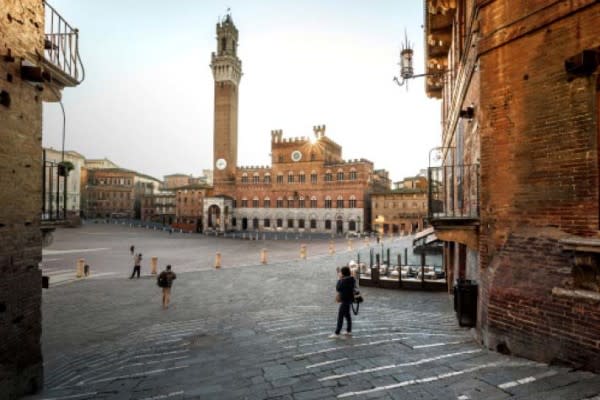 Piazza del Campo in Siena
Piazza del Campo in SienaFrom Siena to Rome, the Via Francigena winds up sweet hills dotted with cypress trees, along the crest and past Chianti vineyards and the lunar landscape of the so-called crete senesi, cracks in the clayey soil surface with a distinctive reddish coloration.
We suggest you take an alternative route along white and scenic roads, exiting from Porta Tufi and through Ville di Corsano, Radi, Vescovado, Murlo, Badia Ardenga (from here you can get onto the Cassia road, which is a bit less traffic-congested in this stretch),
Montalcino - the home of Brunello, one of Italy’s finest wines - the white Cistercian abbey of Sant’Antimo which rises as a mirage out of Sangiovese Grosso vineyards, San Quirico d’Orcia, with its magnificent Romanesque collegiate church, Campiglia d’Orcia, Abbadia San Salvatore, Acquapendente and then you enter the Lazio region.
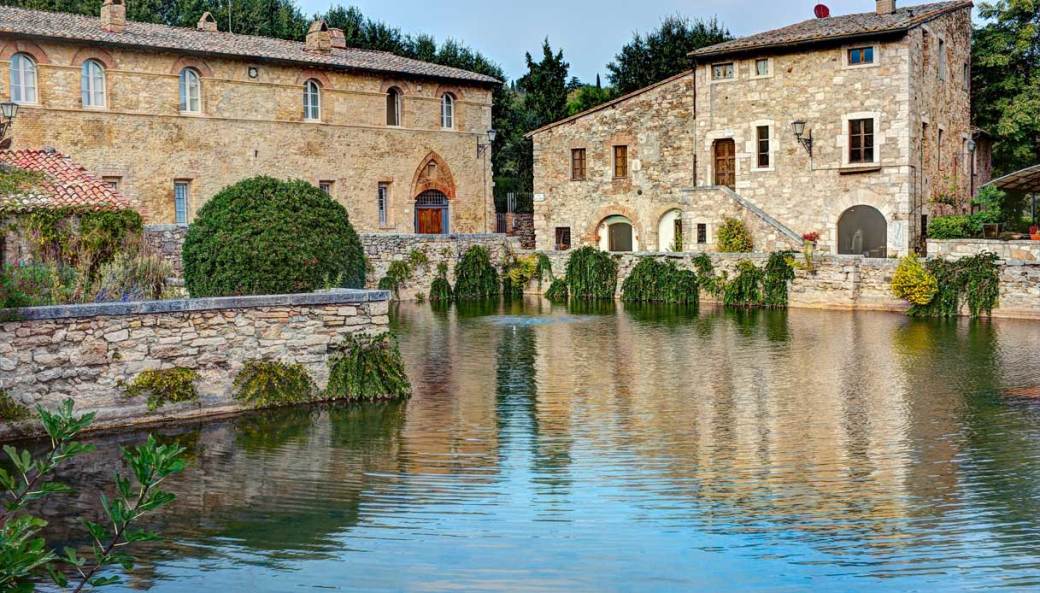 Bagno Vignoni
Bagno Vignoni In the countryside around San Quirico, you’ll see two of Tuscany’s most iconic sights that grace so many postcards: the cypress trees of Triboli and the Chapel of the Madonna di Vitaleta. The hills are steeper, the perfect training for your muscles, but the area is rich
in thermal water springs, such as those in Bagno Vignoni and Bagni San Filippo.
One final wonder awaits you before entering the Lazio region, between Radicofani and
Acquapendente. Here the Cassia road suddenly turns left and then continues straight ahead southwards. The small village of Centeno, unknown to most drivers, will appear before your
eyes. This is the place where Galileo stayed during his journey to Rome when he was summoned by the Inquisition.






